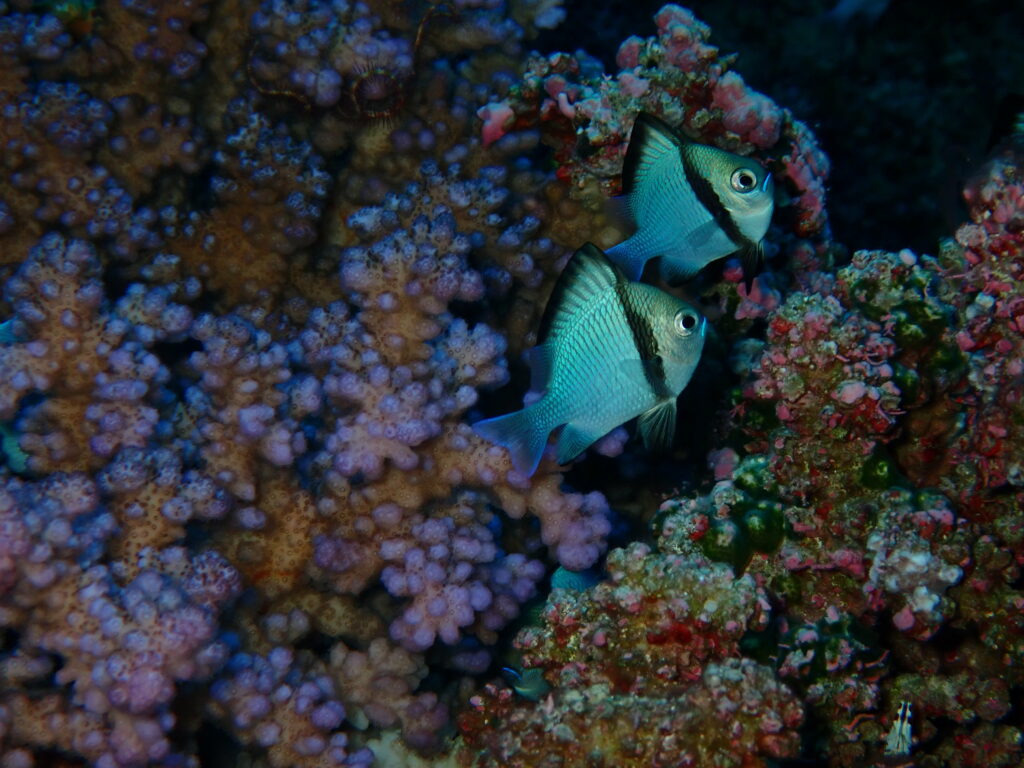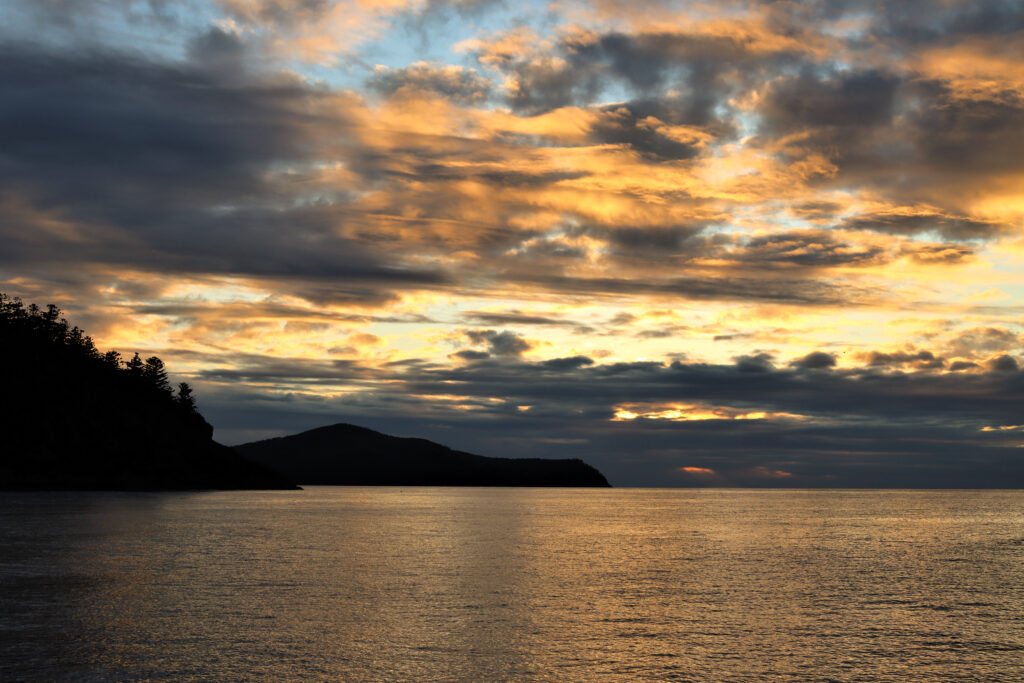Melita, the sister vessel to Eviota (and sometimes known as Eviota 2.0), set sail from Gladstone marina on the 1st of July 2023, embarking on its very own ‘Lap of Australia’. This lap would be a 6-month voyage around most of the Australian continent, with RLS divers hopping aboard in shifts to complete biodiversity surveys along the way.
Onboard RLS Co-founder Graham Edgar's beautiful and spacious 43-foot sailing catamaran for its inaugural leg were Graham, coral specialist Emre Turak, Lara Denis-Roy and Kirsty Whitman. Prior to every legs’ departure, new crew were briefed and inducted to the boat, going over the logistics for sailing, diving, and living aboard Melita in close quarters. Each crew member was also equipped with an underwater marine GPS for peace of mind whilst diving in remote locations. Departing at 8pm that evening, Melita motored out to North-West Island, 75 km northeast of Gladstone in the Capricorn Bunker Group. Biodiversity surveys would kick off the next morning; the beginning of the crew's big adventure.

North-West Island, Middle Percy Island, and the Whitsundays
We had 20 knots of winds blowing from behind and some swell making for decent sailing but a splash of sea-sickness for some. Due to the conditions, we could only survey sites out of the wind and swell. Upon arriving at each destination, our stays were short and sweet; diving, entering data, staying a night and sailing onwards. The usual tropical species expected on these inner Great Barrier Reef sites were abundant. Yellow damsel fish (Pomacentrus moluccensis), Ward's damsel (Pomacentrus wardi),and Rolland's damsel (Chrysiptera rollandi) were out in numbers.
A few unexpected guests appeared out of the gloom at two locations. A huge loggerhead turtle (Caretta caretta) shot off, startled awake from a quick nap by my bubbles at North-West Island, in turn startling me! A curious olive sea snake, (Aipysurus laevis) slithered its way around my legs at Middle Percy Island, which some other divers may not have been so keen on! A showy wobbegong (Orectolobus sp.) perched for a moment for a terrible photo shoot, before swimming off for some peace. And a shy little jaw fish (Opistognathus sp.) that didn’t want to show me much of its beauty is included in the gallery below.. see if you can spot it!
Taking shelter from the winds in the lee of the islands, our anchorages were perfect; calm and quiet with beautiful views, and the smell of nature on the breeze. A beer to two were had for sundowners, whilst watching the beautiful east coast sunsets.

The Coral Sea
The sail out to the coral sea was windy, again with 20 knot winds. The crew were thankful to reach the destinations for a dive or two. The underlying architecture of the reefs in the Coral Sea were outstanding; with drop offs, large bommies, valleys, swim-throughs and 40-meter visibility. In the lagoon, scattered Bomboras (Bommies) were plentiful. Coral cover didn't appear to have changed since our 2021 surveys of the area, with estimates at a maximum of 5% cover on transects. Different species of algae dominated the reef, outcompeting coral. While stunning in its look, I yearned to see what the reef would have looked like when coral was dominant. Another noticeable change was that sharks did not seem to be around like they were in 2021. Only one grey reef shark (Carcharhinus amblyrhynchos) and one white tip reef shark (Triaenodon obesus) checked us out, quite unlike the last time I sailed out this way. After a few reefs and bumpy anchorages out in the Coral Sea, we sailed back to the Great Barrier Reef, in hopes of some calmer waters.
Gimuy/ Cairns
Approximately 30 nautical miles east of Cairns lies the incredibly diverse and beautiful Milln Reef. This was my personal highlight and hopefully, the highlight for everybody else as well! A visit to my old stompin’ grounds when working and living in beautiful Cairns; Milln Reef welcomed me home. It also happened to be a nice, sheltered ‘anchorage’ out of the wind. I was very happy that the crew got to experience this beautiful reef. Emre, our resident coral guru, estimated around 120 species of corals over the 3 sites we surveyed. We did a fun night dive, joined by many large giant trevally (Caranx ignobilis) and red bass (Lutjanus bohar) that got up close and personal, on occasion bumping into us whilst using our torch light to hunt. It was a pretty groovy dive with snoozing parrot fish in their sleeping bags of snot, to cryptic critters and diurnal species with their night-time pyjamas on!
Our sail back into Cairns was beautiful. It was slightly bumpy, but on approach, a light rain and rainbow welcomed us back into a tropical paradise!! Unfortunately for Lara and Emre, it was time to go home. Over the 2 weeks of sailing, we had mostly choppy seas with 20 knots and a bit of rain. Even some seasickness did not deter us from diving and surveying. In these choppy conditions we saw whales – playing in the waves, and during our dives, we saw many, many gorgeous fish and invertebrate species.
We sailed approximately 560 nautical miles, visiting nine reefs and completing 20 survey dives! On the next leg of her inaugural Lap of Australia, Melita and crew will sail from Gimuy/Cairns to Waibene/Thursday Island.... so stay tuned!













